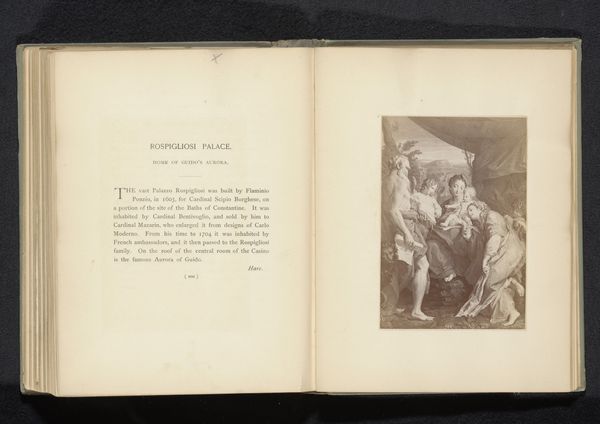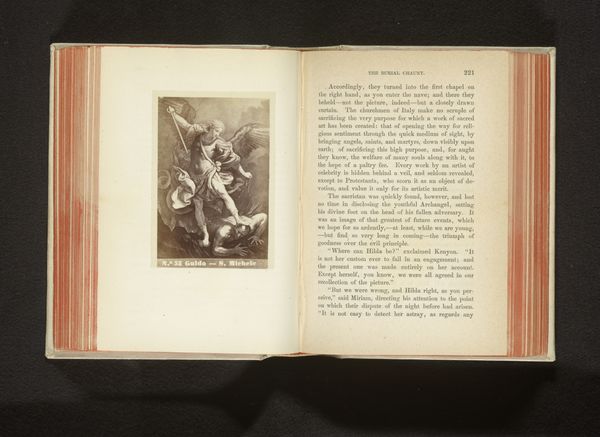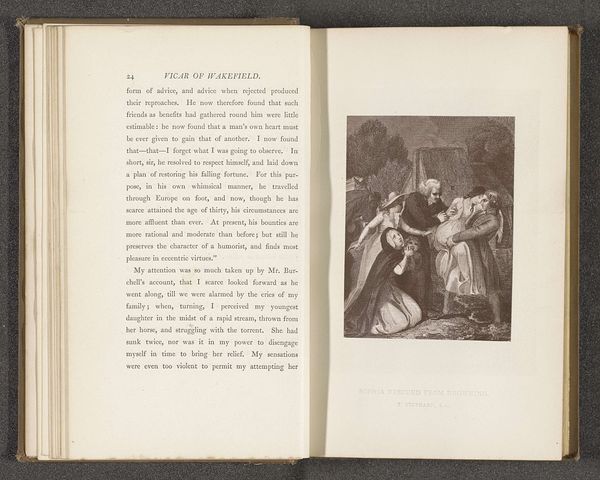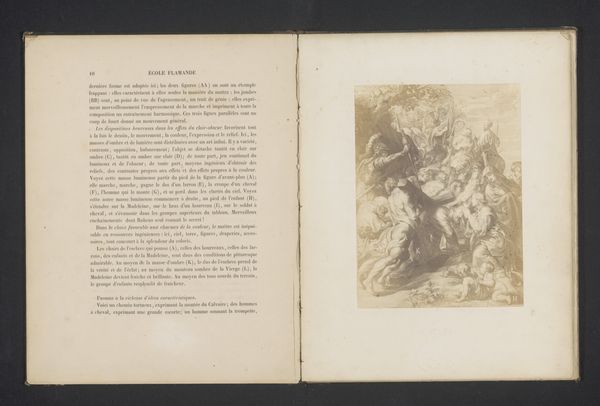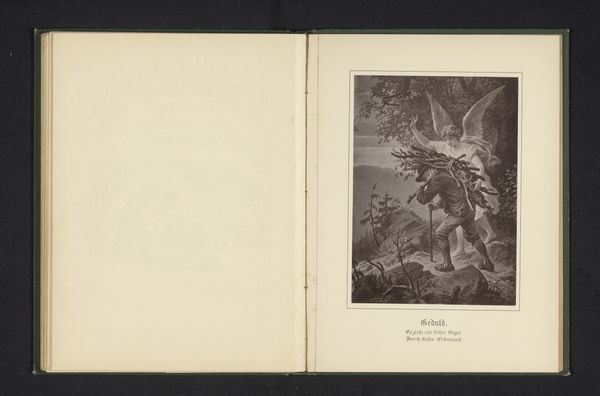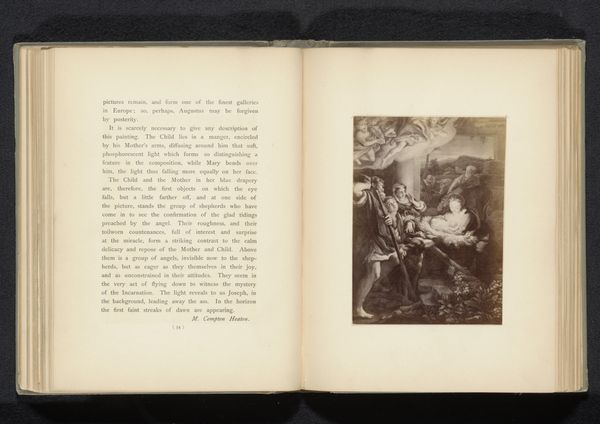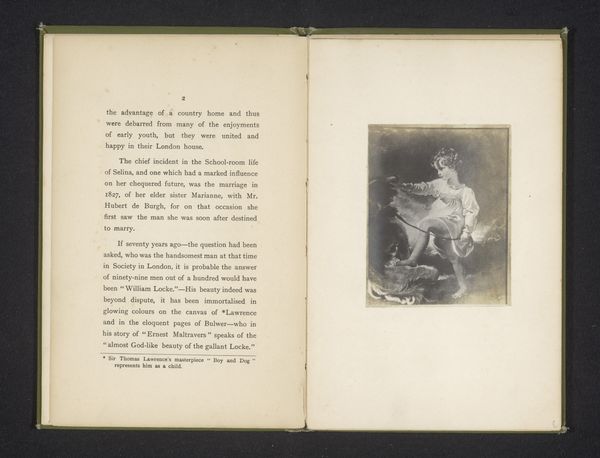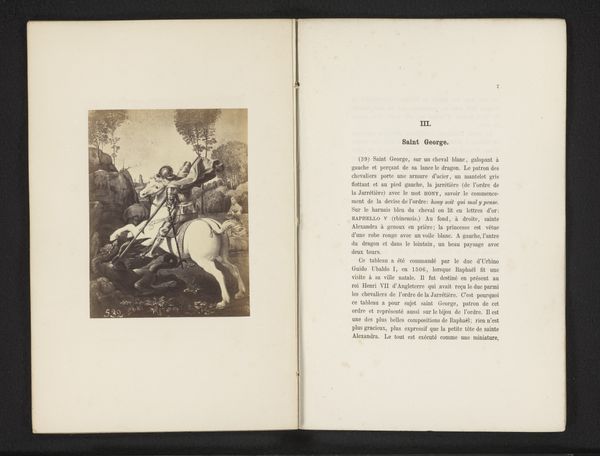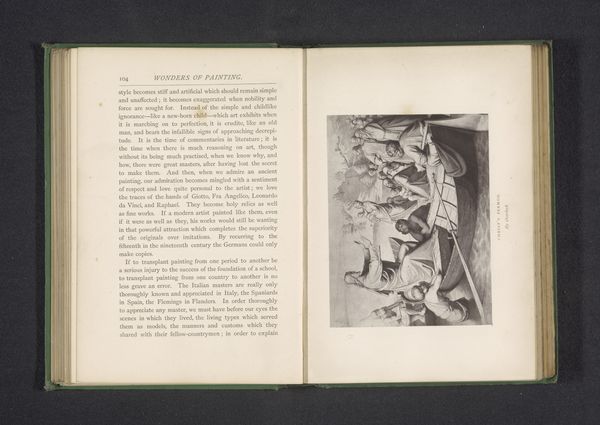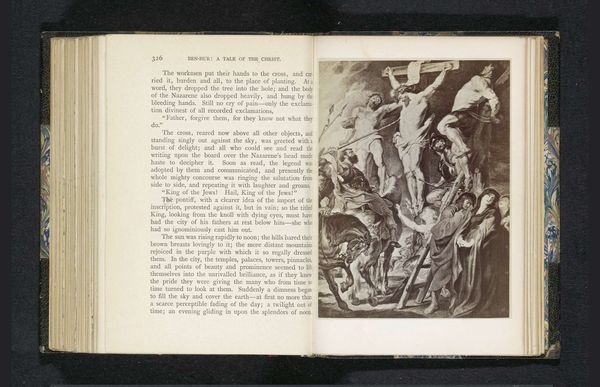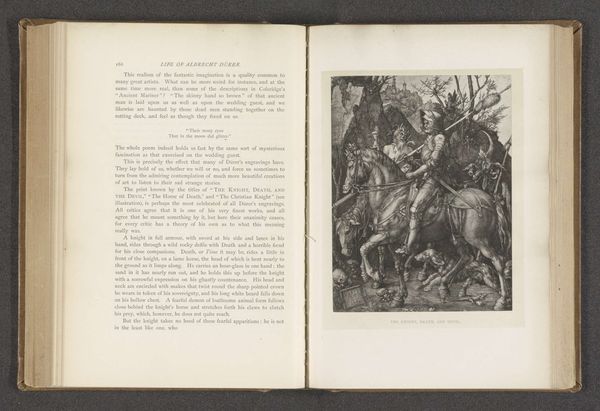
Fotoreproductie van het schilderij 'San Michele Arcangelo' door Guido Reni before 1860
0:00
0:00
anonymous
Rijksmuseum
Dimensions: height 150 mm, width 108 mm
Copyright: Rijks Museum: Open Domain
Curator: This captivating photogravure presents Guido Reni's famed 'San Michele Arcangelo.' It was produced anonymously sometime before 1860, and it’s currently held here at the Rijksmuseum. The composition, of course, illustrates the archangel Michael defeating Lucifer. What are your initial thoughts? Editor: The angel positively vibrates! And given its photographic nature, this piece speaks to replication – not just of imagery but of symbolic power too. How has this moment in paint been mass-produced for a new market? Curator: It’s fascinating, isn’t it? Reni's original, rooted in the Baroque aesthetic, has undergone a transformation. We're seeing it filtered through the lens – quite literally! – of the early photographic techniques of the time, most notably through this process called collotype, which granted it a wide distribution through print. I wonder what shifts, if any, these transformations bring to our understanding of the archangel and what he represents… Editor: Mass distribution definitely dilutes the ‘aura’ of the original painted artwork – that much is true! But it simultaneously allows more individuals, of varied social strata, access to the images’ visual culture. How interesting to see such a complex and potentially costly image circulated! What could one deduce about society’s consumption of imagery here? Curator: Precisely! This piece is more than just a photograph. It's an object revealing social and cultural currents—an expression of power and faith democratized through industrial means, in an era that balanced scientific advancement and spiritual convictions. This is such an exemplary expression of iconography’s continued force through visual media. Editor: It’s clear that this unassuming collotype encapsulates a rather nuanced cultural negotiation that is both exciting and rewarding to study. Thanks! Curator: And to you. It offers such a powerful reflection on how both our vision and visual consumption evolve with the ever-changing tools for their creation.
Comments
No comments
Be the first to comment and join the conversation on the ultimate creative platform.

